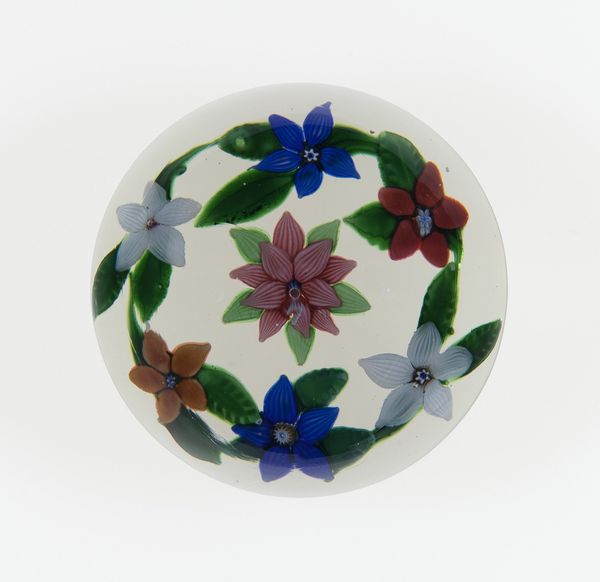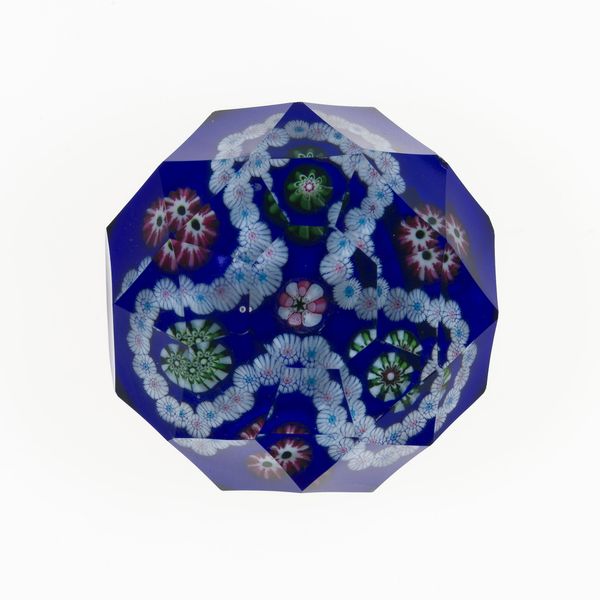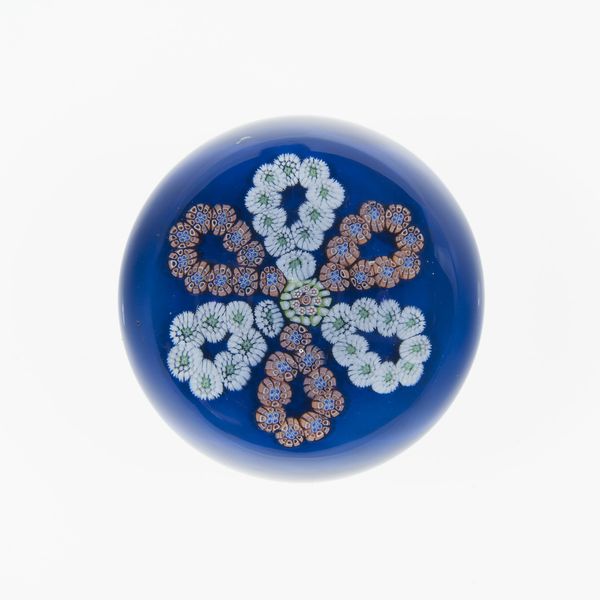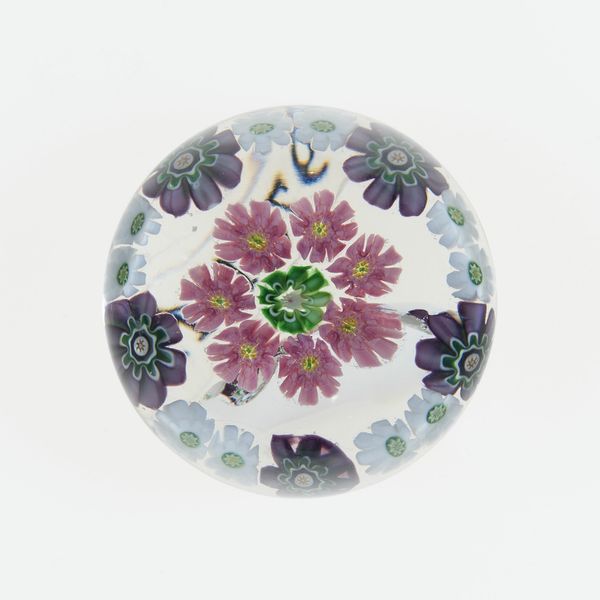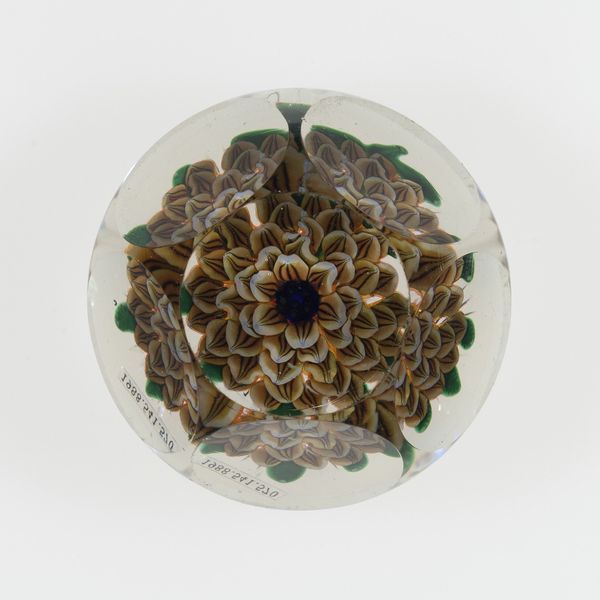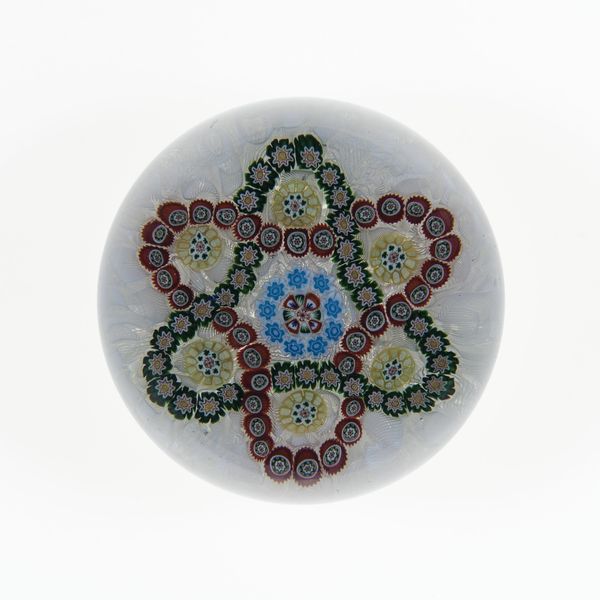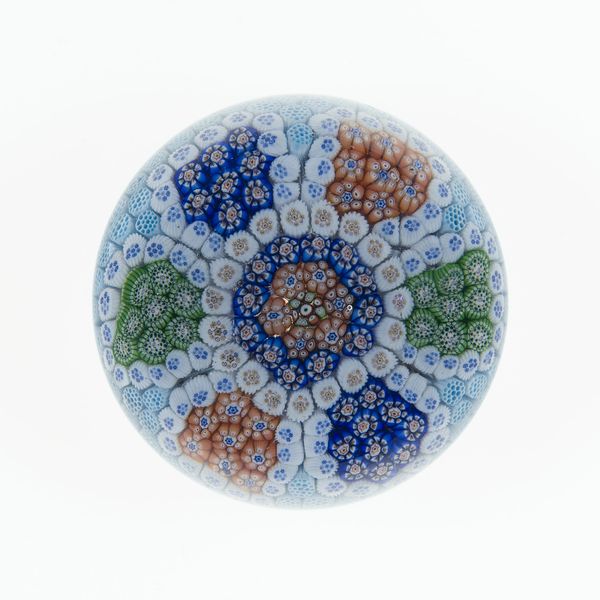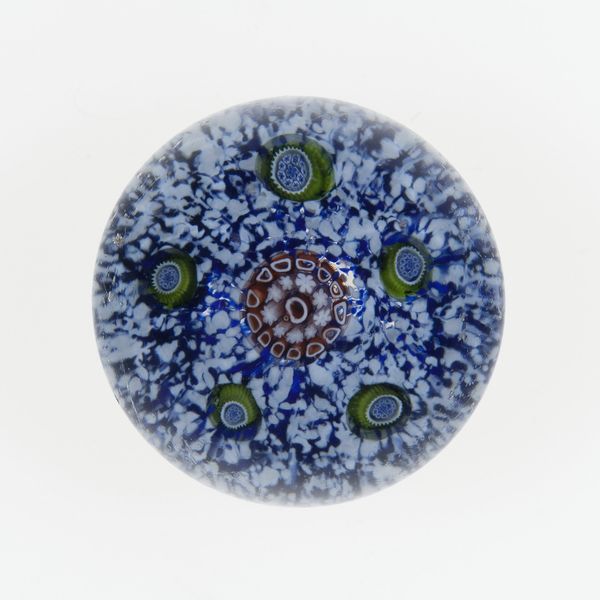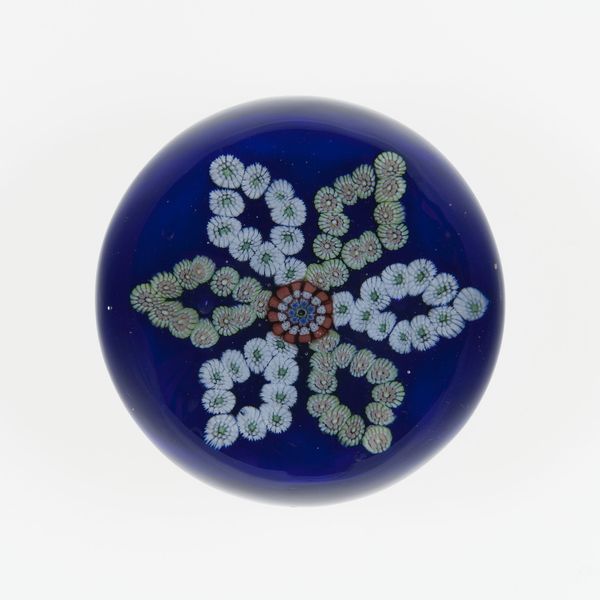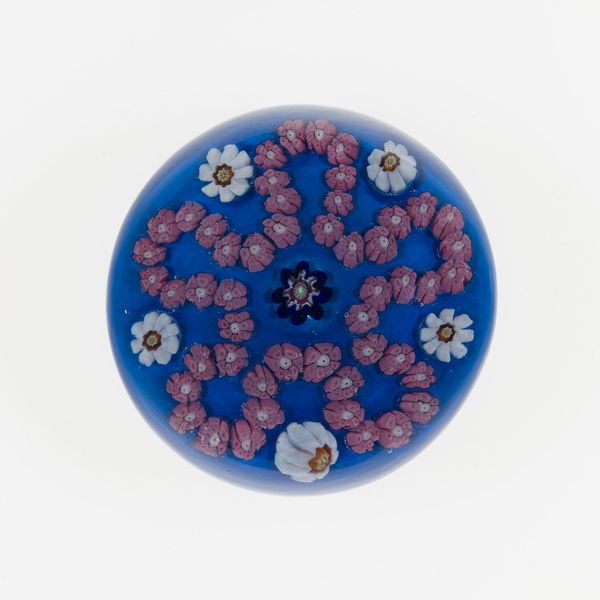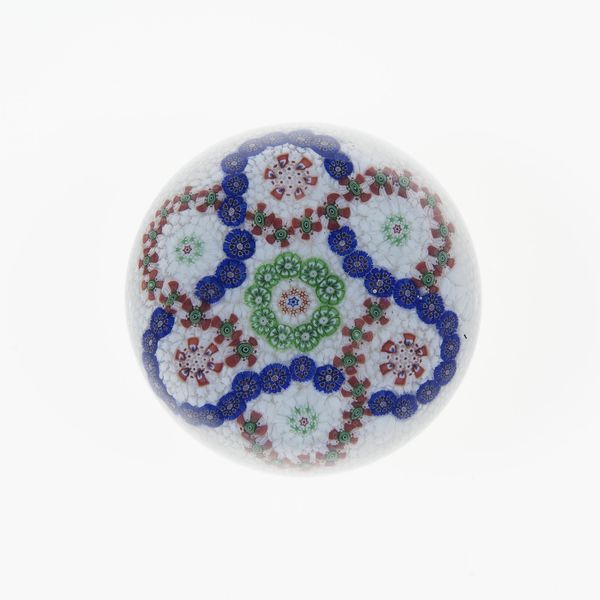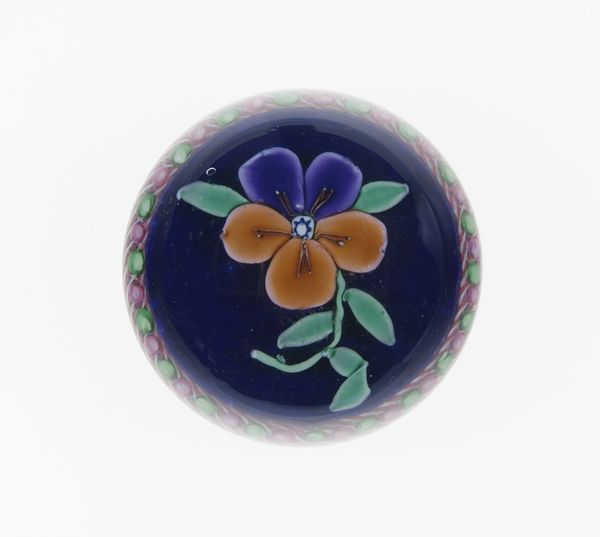
paper, glass
#
paper
#
glass
#
geometric
#
decorative-art
Dimensions: Diam. 7.6 cm (3 in.)
Copyright: Public Domain
Editor: So this is a glass paperweight made by the Compagnie de Saint Louis around 1845-1855. The floral pattern trapped inside is mesmerizing. What do you see when you look at it? Curator: It's more than just a pretty object. Consider its historical context: mid-19th century. What societal values were being "contained" or, perhaps, carefully displayed, like this intricate design? We can also consider how decorative arts were regarded – often deemed 'feminine' or less serious than other art forms. How does this influence our interpretation? Editor: That's interesting! I hadn’t considered gender implications. It looks like perfect symmetry, which might imply a rigid structure. But maybe that perfectness is an illusion? Curator: Precisely. This paperweight uses control of the artistic process, a carefully constructed artifice, if you will, to create an illusion of perfection. But what about the labor involved in its creation? Whose hands were creating these objects? And were they considered artists or mere craftspeople? Editor: So it’s both an object of beauty, and a reflection of the socio-economic structures that enabled its production? Is the purpose of the paperweight merely utilitarian, or are there layers of commentary trapped within? Curator: It’s both! Objects like these participate in a cultural dialogue about labor, value, gender, and aesthetics. By engaging with those questions, we activate the object, acknowledging its place within the art-historical canon and within its own time. Editor: This gives me so much to consider beyond its simple aesthetic appeal! Thanks! Curator: It’s a testament to the power of viewing art through the lens of history, class and gender, even in the case of seemingly simple art objects.
Comments
No comments
Be the first to comment and join the conversation on the ultimate creative platform.
